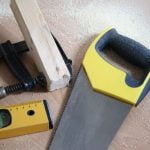Are you considering making improvements to your home but unsure of how much you can borrow to fund the project? In this article, we will explore the topic of home improvement loans and answer the question, “How much can you get home improvement loan?” Home improvement loans play a crucial role in helping homeowners make necessary renovations and updates to their properties, and understanding the borrowing options available is essential for anyone considering such projects.
When it comes to home improvement loans, there are various types to consider, including personal loans, home equity loans, and home equity lines of credit (HELOC). Each type has its own maximum borrowing limits and unique terms, so it’s important for homeowners to be knowledgeable about these options in order to make informed decisions regarding their renovation projects.
Homeowners should be aware that several factors impact the amount of loan they can obtain for their home improvement projects. Lenders typically consider factors such as credit score, income, and the value of the home when determining the maximum loan amount. By understanding these considerations, homeowners can assess their financial situation and evaluate how much they may qualify for before initiating any renovation plans.
Understanding Home Improvement Loans
When considering home improvement loans, it is important for homeowners to understand the different types of loans available to them. These options include personal loans, home equity loans, and home equity lines of credit (HELOC). Each type of loan has its own specific features and benefits, and it’s essential for homeowners to weigh their options carefully before deciding on the best fit for their particular renovation needs.
Personal Loans for Home Improvement
Personal loans are a popular choice for financing home improvement projects, as they offer borrowers flexibility and convenience. These unsecured loans do not require collateral and can be used for a variety of purposes, including renovations and repairs. The maximum loan amounts available for personal loans vary depending on the lender and the borrower’s creditworthiness. Generally, borrowers with higher credit scores and stable incomes may qualify for larger loan amounts.
Home Equity Loans and HELOCs
On the other hand, home equity loans and HELOCs allow homeowners to leverage the equity in their homes to fund renovation projects. Home equity loans provide a lump sum upfront at a fixed interest rate, while HELOCs offer a line of credit that can be accessed as needed with a variable interest rate.
The maximum loan amounts available through these options depend on the amount of equity a homeowner has in their property. Lenders typically allow borrowers to access up to 85% of their home’s appraised value minus any outstanding mortgage balance.
Calculating Loan Amount
When deciding which type of home improvement loan is most suitable, homeowners should calculate the maximum loan amount they may qualify for based on their financial situation and the value of their home. This involves assessing factors such as credit score, income, outstanding debts, and the current market value of the property. By understanding how each type of loan calculates maximum amounts, homeowners can make informed decisions about which option best aligns with their renovation budget requirements.
Factors That Impact Loan Amount
When applying for a home improvement loan, it’s essential to understand the factors that lenders consider when determining the loan amount. These factors play a crucial role in deciding how much money you can borrow for your renovation or remodeling project. Here are some key factors that impact the loan amount:
1. Credit Score: One of the primary considerations for lenders when determining the loan amount is your credit score. A higher credit score typically means that you’re eligible for a larger loan amount at a lower interest rate. On the other hand, if you have a lower credit score, lenders may offer you a smaller loan amount or charge higher interest to compensate for the increased risk.
2. Income: Lenders also take into account your income and employment status when assessing your eligibility for a home improvement loan. A stable and sufficient income can significantly impact the maximum loan amount you can qualify for, as it demonstrates your ability to repay the borrowed funds.
3. Home Value: The value of your home is another critical factor that directly influences the maximum loan amount available to you. Lenders may consider conducting an appraisal of your property to determine its current market value and assess its potential as collateral for the loan.
Understanding how these factors affect your eligibility and maximum loan amount is crucial when planning for home improvement projects. By maintaining good credit, managing your finances prudently, and accurately estimating the value of your property, you can position yourself better to qualify for a higher loan amount and secure favorable terms from lenders.
Maximum Loan Amounts
When it comes to home improvement projects, securing the necessary funds is crucial to ensure that renovations are completed successfully. Different types of home improvement loans have varying maximum loan amounts that lenders typically offer to borrowers. Understanding these maximum loan amounts can help homeowners plan and budget for their renovation projects effectively.
For personal loans, the maximum loan amount that borrowers can obtain for home improvement projects usually ranges from $1,000 to $100,000. The specific amount available to an individual borrower depends on factors such as credit score, income, and other financial considerations. Personal loans are unsecured and may have higher interest rates compared to secured loans like home equity loans or HELOCs.
In contrast, home equity loans and HELOCs allow homeowners to access the equity in their properties for renovation purposes. The maximum loan amount available through a home equity loan is typically determined by the value of the home and the amount of equity that the homeowner has built up.
Lenders may offer up to 85% of the appraised value of the home minus any outstanding mortgage balance. On the other hand, HELOCs provide homeowners with a line of credit based on their home’s equity, allowing them to borrow up to a certain percentage of the appraised value of their property.
Understanding these maximum loan amounts offered by lenders for different types of home improvement loans is essential for making informed decisions about financing renovation projects. Homeowners should carefully consider their financial situation and specific borrowing needs before choosing the most suitable loan option for their home improvement endeavors.
| Loan Type | Maximum Loan Amount |
|---|---|
| Personal Loans | $1,000 – $100,000 |
| Home Equity Loans | Up to 85% of appraised value minus outstanding balance |
| HELOCs | Up to a certain percentage of appraised value |
Personal Loans for Home Improvement
Personal loans are a popular option for homeowners looking to finance home improvement projects. These types of loans are unsecured, meaning they do not require any collateral such as a home or property to secure the loan. Instead, lenders typically determine the loan amount based on the borrower’s creditworthiness and income.
Maximum Loan Amounts
The maximum loan amounts available for personal loans for home improvement can vary depending on the lender and the borrower’s financial situation. In general, personal loans can range from a few thousand dollars to upwards of $100,000. However, the specific maximum loan amount that a homeowner may qualify for will depend on factors such as their credit score, income, and other debts.
Specific Requirements
In order to obtain a personal loan for home improvement, borrowers will need to meet certain requirements set by the lender. This may include having a minimum credit score, proof of stable income, and a low debt-to-income ratio. Additionally, some lenders may require borrowers to provide details about the specific home improvement project they plan to use the funds for.
Ultimately, personal loans can be an attractive option for homeowners who need funding for smaller-scale home improvement projects and do not want to put their home or property at risk as collateral. By understanding the maximum loan amounts available and meeting the specific requirements set by lenders, homeowners can access the funds they need to make necessary renovations and updates to their properties.
Home Equity Loans and HELOCs
Home equity loans and Home Equity Lines of Credit (HELOCs) are popular options for homeowners looking to finance their home improvement projects. These types of loans allow homeowners to borrow against the equity they have built in their homes, providing them with access to a significant amount of money for renovations and updates.
Here is a breakdown of the maximum loan amounts available for home equity loans and HELOCs, as well as how homeowners can tap into the equity in their homes for their renovation projects:
- Maximum Loan Amounts: When it comes to home equity loans, lenders typically allow borrowers to access up to 85% of the equity in their homes. This means that if a homeowner has $100,000 in equity, they may be eligible for a home equity loan of up to $85,000.
On the other hand, HELOCs also allow homeowners to borrow against their home’s equity, but they typically come with a credit limit that is determined by the lender based on the value of the property and the borrower’s creditworthiness. - Accessing Home Equity: Homeowners can access the equity in their homes through either a lump sum payment with a home equity loan or through a revolving line of credit with a HELOC. With a home equity loan, borrowers receive the full loan amount upfront and then repay it over time with fixed monthly payments.
In contrast, a HELOC functions more like a credit card, allowing homeowners to borrow funds as needed up to their approved credit limit and only pay interest on the amount borrowed. - Considerations for Borrowers: It’s essential for homeowners considering these options to carefully assess their financial situation and determine how much they actually need for their renovation projects before borrowing against their home’s equity. While tapping into home equity can provide substantial funding for improvements, it also puts one’s property at risk if they are unable to repay the loan as agreed.
Overall, understanding how home equity loans and HELOCs work and being aware of the maximum loan amounts available can help homeowners make informed decisions when planning out their renovation projects. By leveraging these financing options responsibly, homeowners can significantly enhance the value and enjoyment of their properties without adding unnecessary financial burden.
How to Calculate Loan Amount
When considering a home improvement project, it is important for homeowners to have a clear understanding of how much they can borrow to fund their renovations. Calculating the maximum loan amount they may qualify for based on their financial situation and the value of their home is crucial in planning for these projects. By knowing how to calculate the loan amount, homeowners can avoid overextending themselves financially and ensure that they have sufficient funds to complete their desired renovations.
One important factor that homeowners should consider when calculating the maximum loan amount is their financial situation, including income, credit score, and existing debts. Lenders will assess this information to determine the borrower’s ability to repay the loan, so it is essential for homeowners to have a clear picture of their financial health before applying for a home improvement loan.
Additionally, having a good credit score and a stable income can increase the likelihood of qualifying for a higher loan amount.
In addition to their financial situation, homeowners should also consider the value of their home when calculating the maximum loan amount. The value of the home will play a significant role in determining how much equity can be used as collateral for secured loans such as home equity loans or HELOCs.
By obtaining a professional appraisal or researching comparable property values in their area, homeowners can get an accurate assessment of their home’s worth and use this information to calculate the maximum loan amount they may qualify for.
Tips for Securing a Higher Loan Amount
When it comes to securing a higher loan amount for home improvement projects, there are several strategies that homeowners can employ to increase their chances of obtaining the necessary funds for renovations and updates. One important tip is to work on improving your credit score before applying for a home improvement loan.
Lenders often consider credit history and score as key factors in determining the loan amount, so maintaining a good credit score can significantly impact the amount you may qualify for.
Another practical tip for securing a higher loan amount is to consider adding a co-borrower or co-signer to the loan application. If you have a family member or spouse with a strong credit history and income, including them in the application can boost your overall financial profile and increase the likelihood of qualifying for a larger loan amount.
Furthermore, providing collateral or security for the loan, such as using home equity as collateral, can also help homeowners secure a higher loan amount. Home equity loans and HELOCs allow homeowners to leverage the value of their property to access additional funds for renovation projects. By using their home as collateral, homeowners may be able to qualify for larger loan amounts compared to unsecured personal loans.
| Tips for Securing a Higher Loan Amount | Practical Tips and Advice |
|---|---|
| Improve Credit Score | Maintain a good credit score before applying |
| Add Co-Borrower or Co-Signer | Including someone with strong credit history and income |
| Provide Collateral/Security | Using home equity as collateral for larger loans |
Overall, being proactive in managing your finances, seeking professional advice from lenders or financial advisors, and exploring different types of home improvement loans can all contribute to increasing the chances of securing a higher loan amount for your renovation projects. By taking these practical steps and considering various options available, homeowners can make informed decisions when seeking financing options for their home improvement needs.
Conclusion
In conclusion, home improvement loans can be a valuable resource for homeowners looking to make necessary renovations and updates to their properties. Understanding the different types of home improvement loans, such as personal loans, home equity loans, and home equity lines of credit (HELOC), is crucial in determining which option best suits individual financial situations and renovation needs.
Additionally, factors such as credit score, income, and the value of the home play a significant role in determining the maximum loan amount available to homeowners.
As discussed in this article, it is important for homeowners to carefully consider the maximum loan amount when planning for home improvement projects. By understanding the maximum loan amounts typically offered by lenders for different types of home improvement loans, individuals can better gauge their financial capacity and make informed decisions about their renovation plans.
Calculating the maximum loan amount based on one’s financial situation and home value can provide valuable insight into how much can be borrowed for renovation projects.
Ultimately, securing a higher loan amount for home improvement projects may require careful preparation and consideration of various factors such as creditworthiness, income stability, and property value. Utilizing practical tips and advice on how to increase one’s chances of securing a higher loan amount can empower homeowners to pursue their renovation goals with confidence.
By carefully assessing loan options and considering maximum loan amounts available, individuals can embark on their home improvement projects with a clear understanding of their financial capabilities and borrowing potential.
Frequently Asked Questions
Are Home Improvement Loans a Good Idea?
Home improvement loans can be a good idea for homeowners who need to make necessary renovations or repairs but don’t have the funds readily available. These loans can provide the necessary financing to make improvements that may increase the value of the home or simply improve its functionality and comfort.
What Is the Average Length of a Home Improvement Loan?
The average length of a home improvement loan can vary depending on the lender and the specific terms of the loan. Typically, these loans can have a term of anywhere from two to ten years, with some lenders offering longer repayment periods for larger loan amounts.
Can You Borrow More for Home Improvements?
Yes, it is possible to borrow more for home improvements, especially if the renovations are expected to significantly increase the value of the property. Some lenders may offer higher loan amounts specifically for home improvements, taking into consideration the potential return on investment that these improvements can bring when it comes time to sell the house.
Ultimately, it will depend on factors such as creditworthiness, income, and other financial obligations.

I’m thrilled to have you here as a part of the Remodeling Top community. This is where my journey as an architect and remodeling enthusiast intersects with your passion for transforming houses into dream homes.





